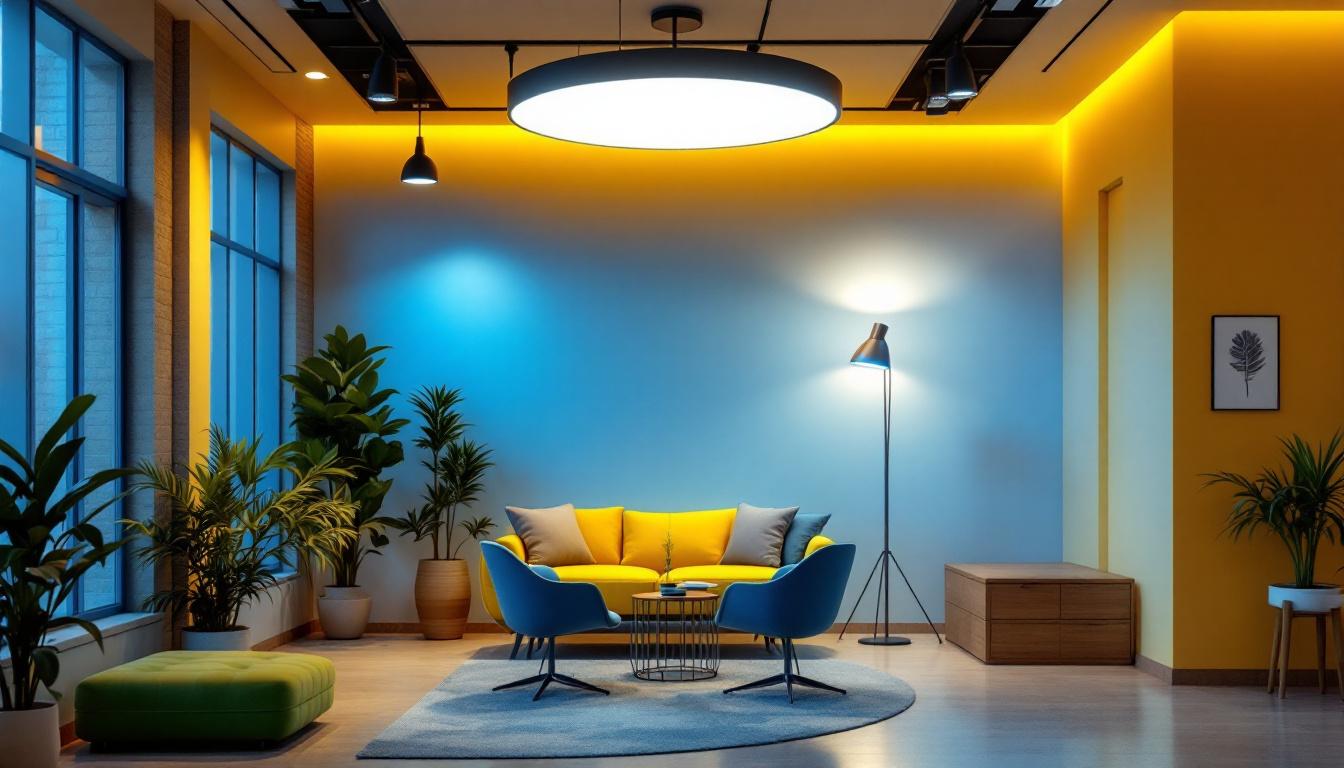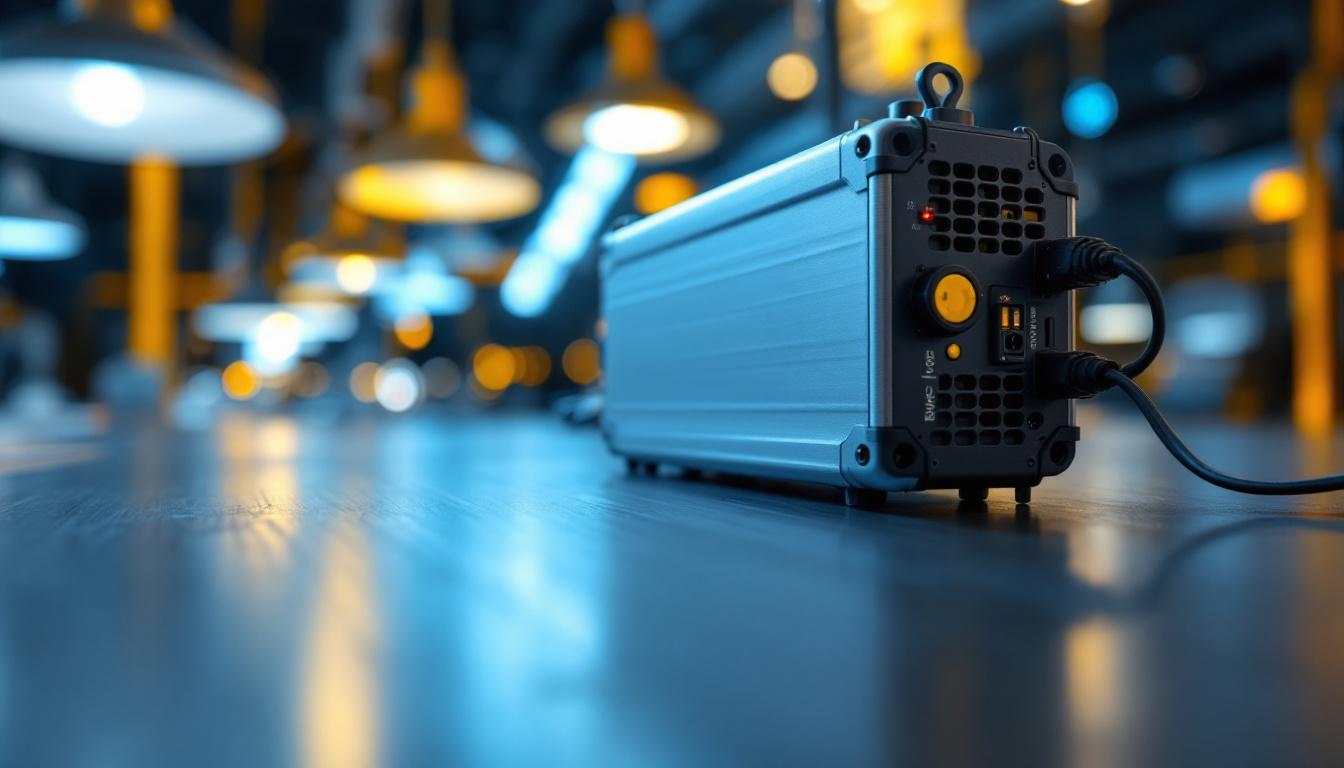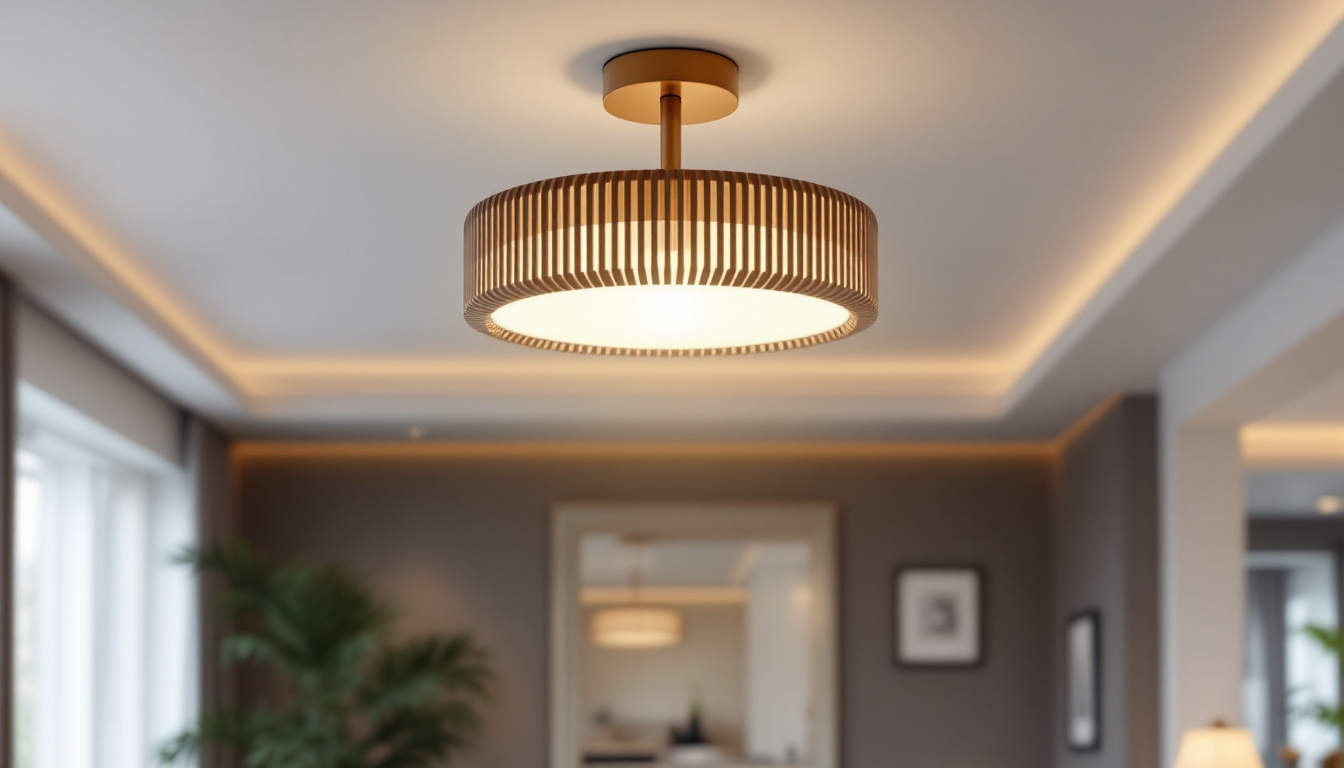
In the ever-evolving landscape of the lighting industry, top down lighting has emerged as a significant trend that is reshaping how spaces are illuminated. This innovative approach not only enhances aesthetics but also improves functionality, making it a crucial consideration for lighting contractors. As the demand for energy-efficient and versatile lighting solutions continues to rise, understanding the implications and applications of top down lighting becomes essential.
Top down lighting refers to the technique of directing light from above, creating a downward illumination effect. This method is widely used in various settings, including residential, commercial, and industrial environments. The design philosophy behind top down lighting is rooted in its ability to create a sense of openness and spaciousness while effectively highlighting specific areas. By casting light from above, it not only enhances the aesthetics of a space but also contributes to the overall functionality, making it a popular choice among designers and architects alike.
Unlike traditional lighting methods that may rely on multiple sources scattered throughout a space, top down lighting focuses on a centralized source. This not only simplifies the design but also allows for more efficient energy use. By directing light from above, it minimizes shadows and enhances visibility, which is particularly beneficial in workspaces or areas requiring detailed tasks. The uniform distribution of light can also reduce eye strain, making it an ideal solution for environments where individuals spend extended periods of time, such as reading nooks or office cubicles.
One of the defining characteristics of top down lighting is its versatility. It can be implemented through various fixtures, including recessed lights, pendant lights, and track lighting. Each of these options offers unique benefits and can be tailored to fit the specific needs of a project. For instance, recessed lighting provides a sleek, unobtrusive look that can blend seamlessly into the ceiling, while pendant lights can serve as striking focal points that add character to a room. Track lighting, on the other hand, offers flexibility in directing light to different areas, making it ideal for spaces that require adaptability.
Moreover, top down lighting can easily be integrated with smart technology. This allows for adjustable brightness and color temperature, enabling users to customize their lighting experience based on the time of day or specific activities. Such adaptability is becoming increasingly important as the demand for personalized environments grows. With the rise of smart home systems, users can now control their lighting via smartphone apps or voice commands, further enhancing convenience and efficiency in everyday life.
Top down lighting is not limited to a single application; it spans a wide range of environments. In residential settings, it can create a warm and inviting atmosphere in living rooms or kitchens. Soft, warm light can enhance the coziness of a family gathering, while brighter, cooler light can invigorate a kitchen during meal prep. In commercial spaces, such as offices and retail stores, it enhances product displays and improves employee productivity. The strategic placement of top down lighting can draw attention to merchandise, creating an inviting shopping experience while also ensuring that employees have adequate lighting for their tasks. Additionally, in industrial contexts, top down lighting can ensure safety and efficiency in work areas, illuminating workstations and machinery to prevent accidents and improve workflow.
The flexibility of top down lighting makes it suitable for both new constructions and renovations. As more contractors recognize its benefits, the incorporation of top down lighting into design plans is becoming increasingly common. This approach not only meets the aesthetic desires of clients but also aligns with modern sustainability goals by reducing energy consumption. Furthermore, as building codes evolve to prioritize energy efficiency, top down lighting stands out as a practical solution that meets both regulatory requirements and design aspirations. Whether in a cozy home, a bustling office, or a large warehouse, top down lighting continues to prove its worth as an essential element in contemporary design.
The rise of top down lighting can be attributed to its numerous benefits, which address both aesthetic and practical considerations. For lighting contractors, understanding these advantages is crucial for recommending solutions that meet client needs.
One of the most immediate benefits of top down lighting is its ability to enhance the visual appeal of a space. By casting light from above, it creates a natural and flattering illumination that can highlight architectural features and design elements. This effect can be particularly striking in spaces with high ceilings or unique structural details.
Furthermore, the use of top down lighting can contribute to a cohesive design theme. Whether aiming for a modern, minimalist look or a more traditional aesthetic, the right fixtures can complement the overall style of the environment. This adaptability makes it easier for contractors to meet diverse client preferences.
Beyond aesthetics, top down lighting significantly improves functionality. In work environments, proper illumination is vital for productivity and safety. Top down lighting reduces glare and shadows, ensuring that tasks can be performed efficiently. This is especially important in settings such as offices, workshops, and kitchens, where visibility is paramount.
Moreover, the ability to control brightness and color temperature allows users to create the ideal lighting conditions for various activities. For instance, a workspace may require bright, cool lighting during the day, while a more relaxed, warm light may be preferred in the evening. This level of customization enhances the overall user experience.
As sustainability becomes a focal point in the lighting industry, energy efficiency is a significant advantage of top down lighting. By utilizing LED technology and smart controls, top down lighting systems can significantly reduce energy consumption compared to traditional lighting methods. This not only lowers utility costs for clients but also contributes to environmental conservation.
Contractors can leverage this aspect when discussing project proposals with clients, emphasizing the long-term savings and sustainability benefits. As more consumers prioritize eco-friendly solutions, the demand for energy-efficient lighting options will likely continue to grow.
While top down lighting offers many advantages, it is not without its challenges. Lighting contractors must navigate various considerations to ensure successful implementation in their projects.
One of the primary challenges associated with top down lighting is the complexity of installation. Depending on the chosen fixtures and the existing infrastructure, contractors may encounter difficulties in retrofitting or integrating new systems. This complexity can lead to increased labor costs and extended project timelines.
To mitigate these challenges, thorough planning and assessment of the space are essential. Contractors should evaluate the existing electrical systems and consider the layout of the space to determine the most effective installation approach. Proper training and knowledge of the latest technologies can also enhance installation efficiency.
Another consideration is achieving the right balance of light levels. Overly bright or harsh lighting can create discomfort and negatively impact the overall ambiance of a space. Lighting contractors must carefully calculate the necessary lumens and consider the reflectivity of surfaces to ensure an even distribution of light.
Using dimmable fixtures and smart controls can help address this issue, allowing users to adjust light levels based on their preferences and activities. Educating clients about the importance of proper lighting design can also foster a better understanding of the impact of light on their environment.
As the lighting industry continues to evolve, several trends are emerging that may shape the future of top down lighting. Contractors should stay informed about these developments to remain competitive and provide clients with cutting-edge solutions.
The integration of smart technology into lighting systems is one of the most significant trends in the industry. Top down lighting can benefit greatly from advancements in automation and connectivity. Smart controls allow users to manage their lighting remotely, set schedules, and even adjust settings based on occupancy.
This level of convenience and control is appealing to consumers, making it a selling point for contractors. As smart home technology becomes more prevalent, incorporating top down lighting with these systems will likely become a standard practice.
Another trend gaining traction is the emphasis on wellness and biophilic design in lighting. Research indicates that lighting can significantly impact mood, productivity, and overall well-being. Top down lighting can be designed to mimic natural light patterns, promoting a healthier environment.
Contractors should consider how to incorporate these principles into their designs, whether through adjustable color temperatures or fixtures that emulate natural sunlight. This focus on wellness will resonate with clients seeking to create spaces that enhance their quality of life.
Top down lighting is rapidly gaining importance in the lighting industry, offering a blend of aesthetic appeal, functionality, and energy efficiency. For lighting contractors, understanding its benefits and challenges is essential for delivering effective solutions to clients. As the industry continues to evolve, staying informed about emerging trends will be crucial for maintaining a competitive edge.
By embracing top down lighting, contractors can enhance their project offerings, meet client demands, and contribute to a more sustainable future. As this approach becomes increasingly mainstream, the opportunities for innovation and creativity within the realm of lighting design are boundless.
Ready to elevate your lighting projects with the innovative top down lighting solutions? Look no further than LumenWholesale, where we provide contractors with the highest quality, spec-grade lighting products at unbeatable wholesale prices. Say goodbye to local distributor markups and hello to a vast selection of reliable, high-performance lighting that meets the most rigorous industry standards. With LumenWholesale, bulk buying is a breeze, thanks to our free shipping policy, ensuring you receive premium lighting at the best value — without any hidden fees. Don’t compromise on quality or cost; choose LumenWholesale for the perfect harmony of quality, affordability, and convenience. Wholesale Lighting at the Best Value is just a click away.

Discover the essential role of paddle switches in modern lighting solutions.

Discover the essential guide for lighting contractors on selecting and installing ceiling light fixtures.

Discover how understanding the role of a ballast in lighting can enhance efficiency and boost profitability in your installations.

Discover the essential insights for lighting contractors on modern ceiling light fixtures.